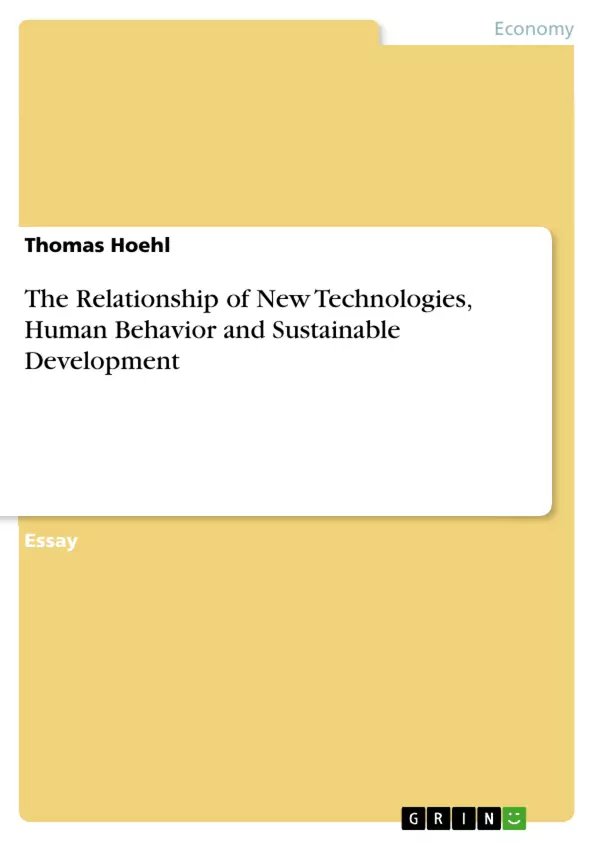This report discusses the relevance of developing new technologies and initiating a change in human behavior as the utilization of natural resources and the toll on the natural environment caused by human civilization is bound to reach unsustainable levels and lead to dire consequences for future generations. Such consequences may include grand calamities such as an increase in permanently degraded and unusable natural environments (as can be witnessed in some parts of China), famines, increasing conflicts for resources, mass migration as well as failing states. This report addresses those two proposed aspects of a possible solution – technology and behavior – discusses how they are interrelated and finishes with a normative conclusion.
Inhaltsverzeichnis (Table of Contents)
- Introduction
- New Technologies
- Change in Human Behavior
- Global Regulation
- Individual Behavior
- Conclusion
- Final remark
Zielsetzung und Themenschwerpunkte (Objectives and Key Themes)
This report explores the intertwined relationship between new technologies, human behavior, and sustainable development, focusing on the challenge of balancing resource utilization with environmental preservation. It examines how technological advancements can both contribute to and exacerbate environmental issues and emphasizes the crucial role of human behavior in achieving a sustainable future.
- The impact of new technologies on resource consumption and environmental sustainability.
- The limitations of technological solutions in addressing fundamental issues such as overconsumption and population growth.
- The importance of global regulation and its challenges in fostering sustainable practices.
- The role of individual behavior and mindset in driving sustainable change.
- The need for a deeper understanding of human consciousness and interconnectedness to achieve lasting transformation.
Zusammenfassung der Kapitel (Chapter Summaries)
- Introduction: This section introduces the central theme of the report, focusing on the unsustainable impact of human civilization on natural resources and the potential consequences for future generations. It presents technology and human behavior as key elements in addressing this challenge.
- New Technologies: This chapter explores the potential of new technologies to improve environmental performance, but highlights the limitations of relying solely on technological solutions. It discusses the influence of economic forces on technological development, particularly in terms of cost efficiency and profitability. The chapter uses examples like electric cars and meat production to illustrate how advancements can lead to increased consumption and unintended environmental consequences.
- Change in Human Behavior: This section delves into the role of human behavior in driving sustainability. It examines the limitations of global regulation due to national interests and challenges in enforcement. The chapter emphasizes the need for a shift in individual behavior, highlighting the influence of consumerism and the overconsumption of goods and services. It discusses the potential of societal and cultural shifts in addressing these challenges.
- Conclusion: This section emphasizes the need for a comprehensive approach to sustainable development that encompasses both technological advancements and a fundamental shift in human behavior.
Schlüsselwörter (Keywords)
This report examines the interplay between new technologies, human behavior, and sustainable development. Key terms include resource utilization, environmental impact, technological advancements, consumerism, overconsumption, global regulation, individual behavior, mindset change, and interconnectedness.
- Citation du texte
- Thomas Hoehl (Auteur), 2015, The Relationship of New Technologies, Human Behavior and Sustainable Development, Munich, GRIN Verlag, https://www.grin.com/document/312438



